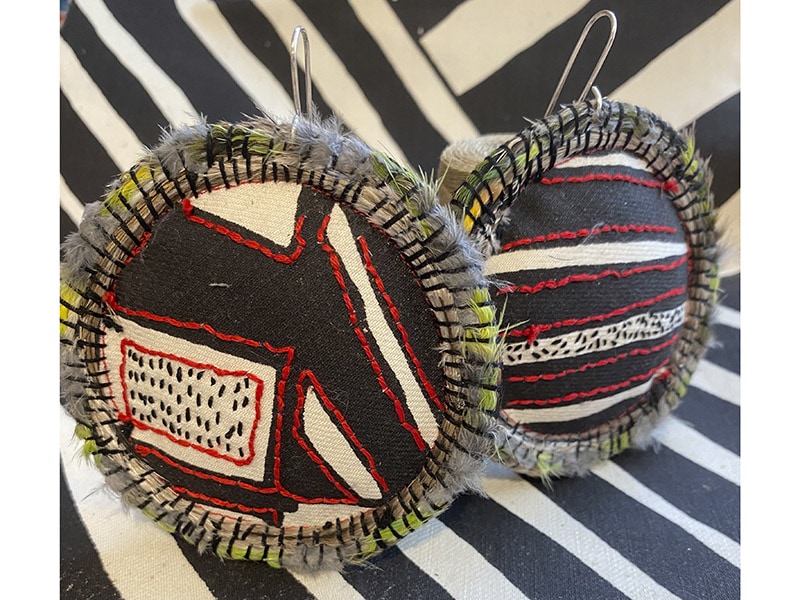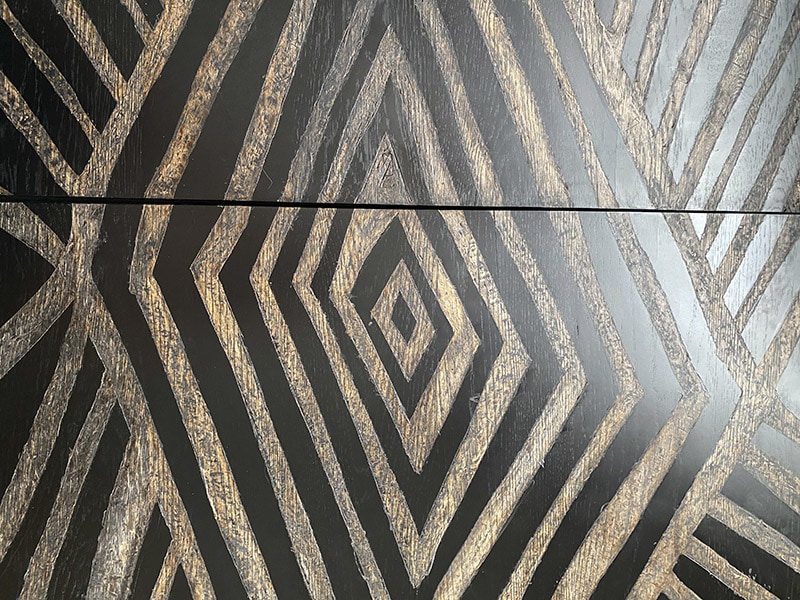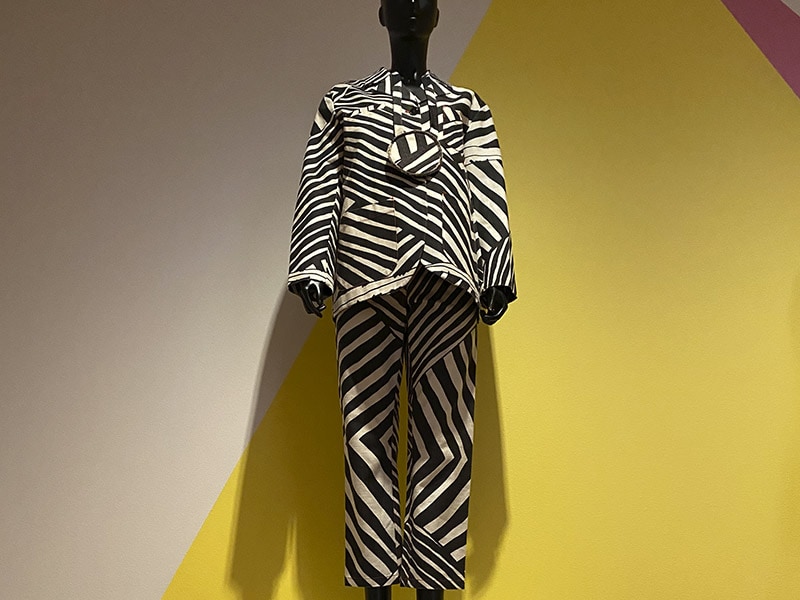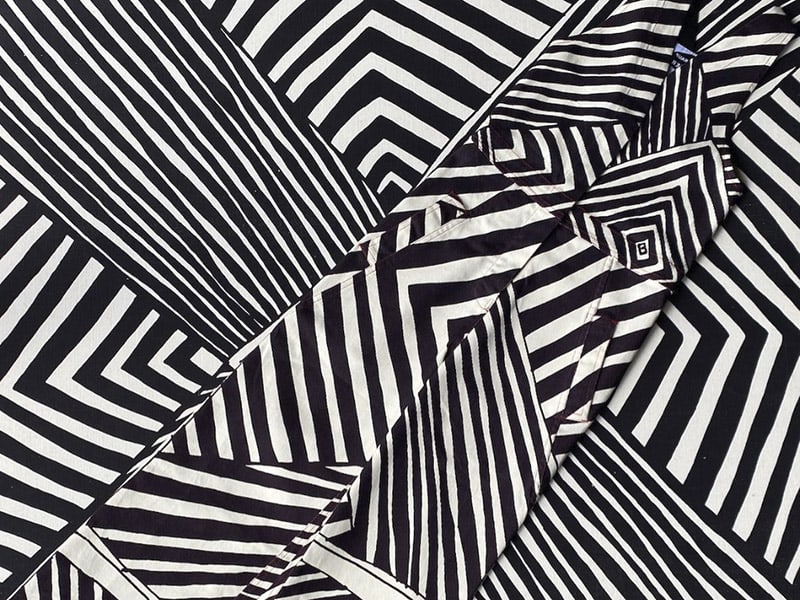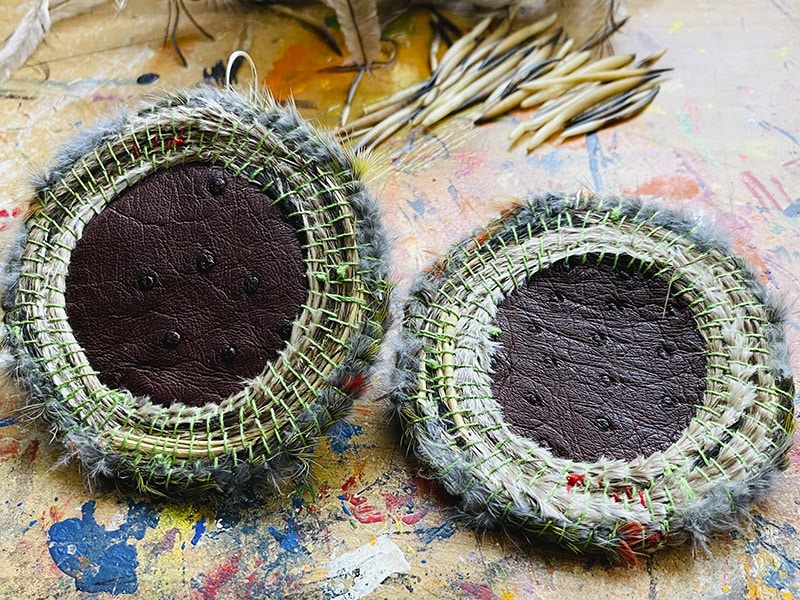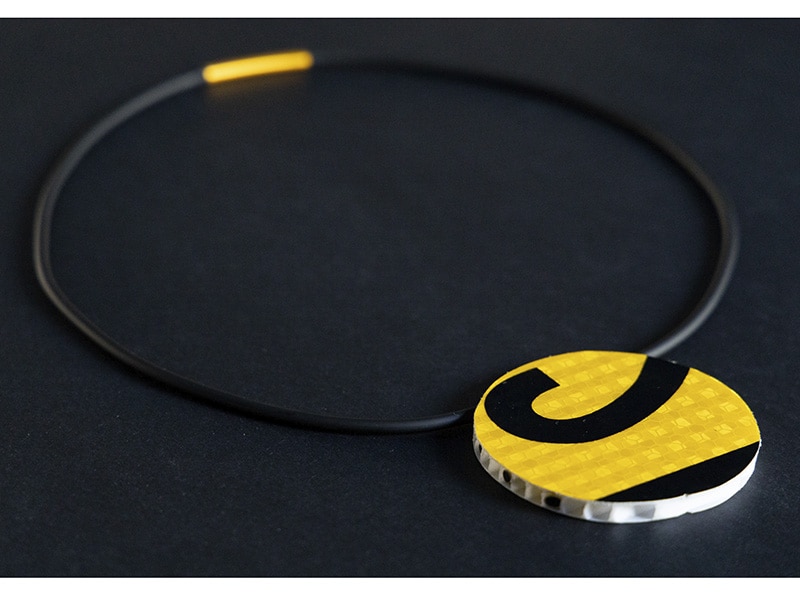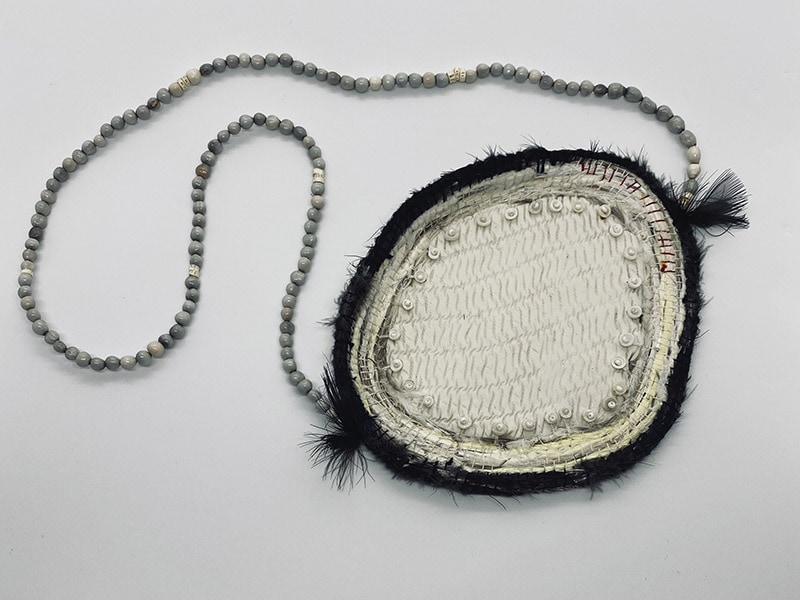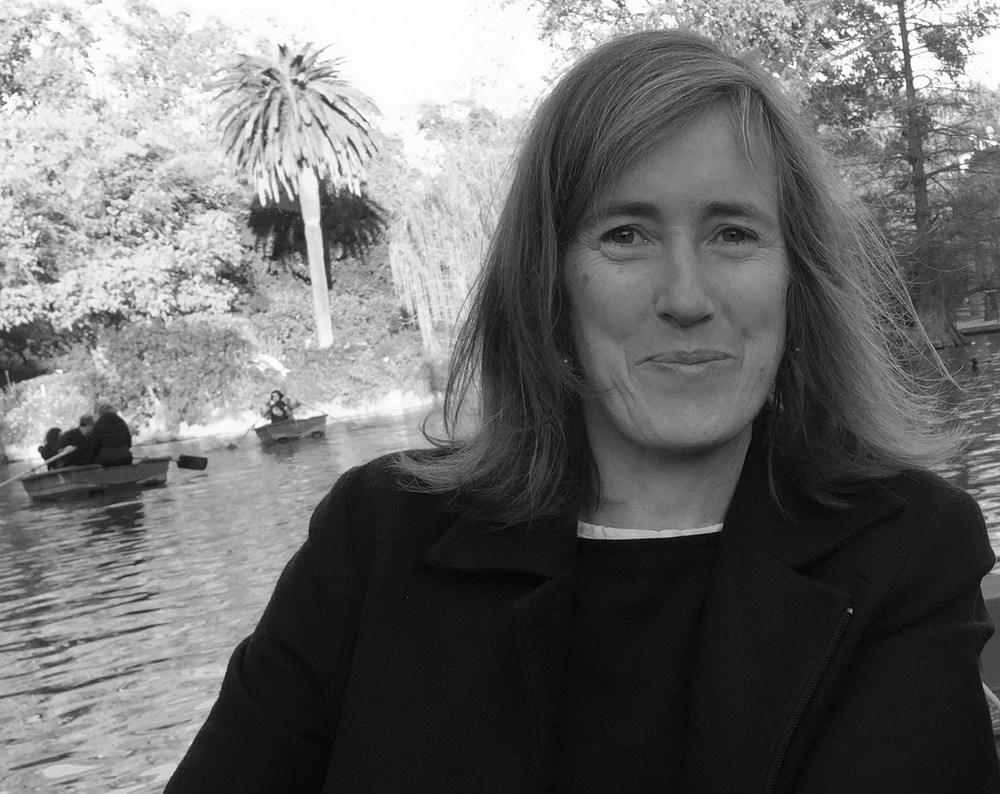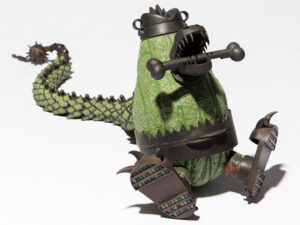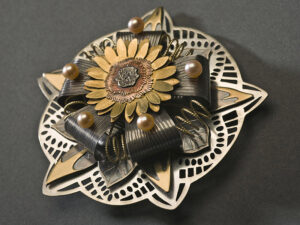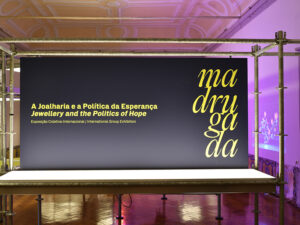
Lisa Waup is a mixed-culture First Nations artist and curator who lives in Naarm (Melbourne), Australia. Through found and natural materials, her soulful, symbolic, and powerful artworks tell stories about her own life while building connections back to Country,[1] family, and history. Approaching the end of her master’s degree studies at the Victorian College of the Arts, Waup is an esteemed and award-winning Australian artist whose journey is well-worth following.

Vicki Mason: Tell us about when you first started making and creating, what learnings remain with you from those days, and how they’ve shaped your practice to date.
Lisa Waup: When I think back to what I first created as a child, it always involved paper. For that reason, I view paper as my first love, and have always gravitated back to it, whether it’s print-based works on paper (etching, screen printing, monoprints, digital, photographic) or drawing. For me, it was a place to escape into a world of my own creation. When I was a child, my family would attend football matches religiously each Saturday—my dad is a North Melbourne devotee—and I would always go armed with paper, pencils, Texta pens, scissors, and sticky tape. Football wasn’t my thing but I loved being with my family. I also recall, when I was about seven or eight years old, creating an entire Wonder Woman outfit entirely out of paper, including high-heel boots that had little stones in the heels.
I also enjoy creating sculptures of my print-based works, especially when I’ve incorporated them into my woven objects (for example, in A Lightness of Spirit Is the Measure of Happiness at the Australian Centre for Contemporary Art [ACCA]). I’ve been creating woven objects now since 2012, yet paper was always there too. I’ve also incorporated paper and weaving into wearable art in the form of jewelry, thereby combining my two favorite mediums—it has been interesting to see how these long-standing influences have shaped and expanded my practice along the way.

Last year I decided to go back to university after 20+ years. My main drive for doing so was to get back into print-based media, create larger scaled works, but mostly to give myself time to deepen my practice. In 2020, I eagerly started the Master of Contemporary Art degree at the Victorian College of the Arts (VCA), University of Melbourne. It was always a dream of mine to go to the VCA. I spent three weeks on campus unaware of what the next year would bring, and then COVID hit. The whole of last year, and much of this year too, I’ve found myself tethered to a laptop, without access to the printmaking and photography departments, at times not allowed to exceed a five-kilometer radius from my home. My practice developed in different ways than what I expected. Nevertheless, I was so grateful for being part of a creative community of incredible artists—I believe we all kept each other sane. I learned a great deal about myself last year.
For most of this year to date, I’ve been working away in the printmaking department. I feel like I’ve just started and now realize that I only have one semester left! I’m loving the touch of paper again, the ink under my nails.
As a multidisciplinary artist who works sculpturally as well as two-dimensionally, where do your woven/stitched/printed/painted jewelry pieces lie within this frame of practice?
Lisa Waup: As a multidisciplinary artist, I’m guided to utilize so many different mediums—they really talk to me—and in turn they’re able to explain my story in different ways, they all connect with each other. Material diversity is a big part of what I do in my practice—I’m happy to move across various media and am always open to exploring new materials and approaches that connect to the work I am making at the time.
For me, even the smallest, seemingly insignificant material—a bottle top, something on the ground that people would easily walk past or over—can be little works of art. They symbolize celebration and at times momentous moments in life; they represent friends getting together to celebrate a hard week and other essential everyday moments. The creation of the bottle top jewelry is a family affair, one that I’ve been doing for some years now. In 2018, I was asked by the Art Gallery of South Australia to create 1,000 painted bottle top brooches for their members program. It took months and months to create them, and I couldn’t have achieved it without my family, especially my dad. He’s currently 88 and he has cleaned, prepared, flattened, and created my mini circular blank canvases (bottle tops) for painting. My dad has flattened well over 3,000 of these bottle tops for me over the years. For this project, I also invited my two girls to help me. I love that each bottle top is painted differently, they’re one-off pieces. Also, because I had friends collecting them for me, and strangers who now have become friends also wanting to collect them for me, it became a community affair.
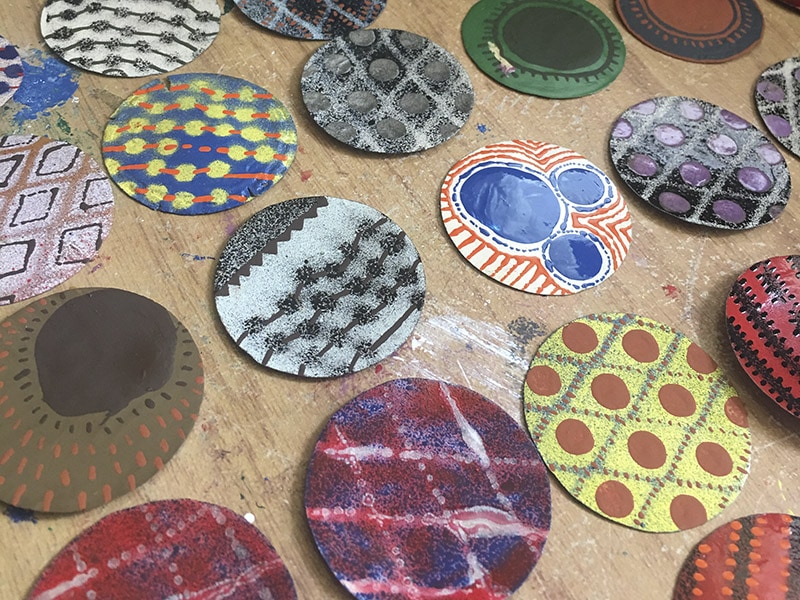
My woven works accentuate stitching at their core, a flickering of color and movement. This also translates to my paper-based work and how I incorporate stitching into those pieces. The red stitching symbolizes family, bloodlines. My woven works also have three little red stitches that symbolize my children, who are always with me. Stitching also expresses the reattaching of lost history, lost family, and reinforces that connection, materially, spiritually, and symbolically.
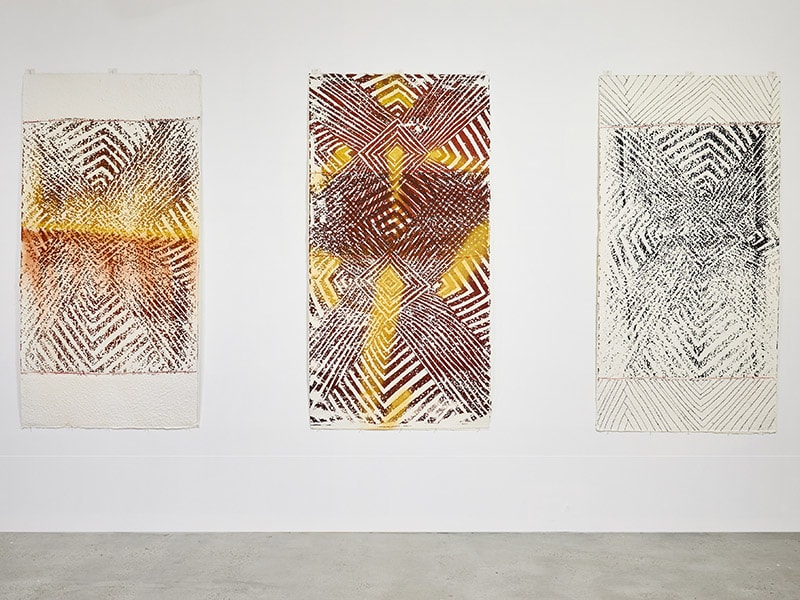
It would be great to know how new works come into being and how your creative process starts. Do you start with an idea, a process, a sketch, or a material—or does what you made last lead you into the next body of work?
Lisa Waup: My creative process includes all of the above—I’m a mad collector of objects, natural and found, and am on the verge of being a hoarder! I have materials that I don’t use for years, yet I know when I find them that they’ll have a purpose one day. Some of these materials will just serve as inspiration. Materiality is a huge part of my practice. The materials inspire me, they evoke thoughts, connection to Country, history, and family. At times these natural objects have filled the void for unknown family. I really love how my travels in life extend to my artwork, and how it all connects to unveil stories that have been hidden for a long time or are composed of fractured elements; the creation of the work is a way of piecing these stories back together and making them whole again. Studying at university for the last year and a half has been a wonderfully challenging process. It has given me time to consolidate my thoughts and ideas, and I am really excited about where I’m heading.

A strong graphic language permeates your two-dimensional works on paper and translates across the many mediums and disciplines you work within. Could you tell us a little about the stories behind your favorite patterns? What do they symbolize and mean to you?
Lisa Waup: The majority of the patterned work began its life in my visual diary—which is a modestly scaled A4 size—so it has been really exciting to see them expand in scale and at times even become animated. One design that I’ve visited many times and that has crossed many different mediums is titled Continuity of Protection (originally Continuity of Stagnation). This started its life representing a shield that protected the documents of my adoption and the papers of my birth mother’s Freedom of Information Act records. Its purpose was to protect the information, to protect my connection with my mother, and to obscure the written information/document underneath so that its private contents could not be fully read. The original drawing came from a concept developed by my husband. He said to me, “Mama, why don’t you draw a square? A square will give you time to stop, time to ponder, time to think, as opposed to a circle continually going ’round.” A great deal of my art practice involved circles; for me circles represent family.
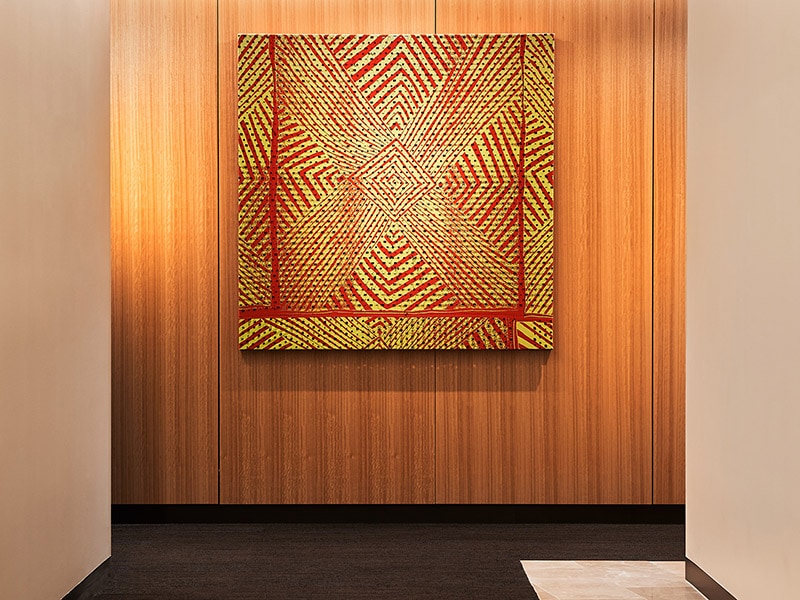
This artwork has been utilized in different mediums since its first conception: drawing, sculpture, printmaking (screen printing on tapa cloth, paper, fabric, kelp, wood), a fashion collection, a jewelry collection (earrings, neckpieces, brooches, rings), and pyrography on wood.
Can you outline the genesis behind, and the process for, making your iconic bottle top brooches? Are you still making them?
Lisa Waup: The creation of the bottle top jewelry started in 2015, and since that time they’ve changed greatly from their first conception. The brooches have been a collaboration between my dad and I from the start. I definitely couldn’t make them without him: I wouldn’t have had the patience or time to do what he has done. It takes so much to get a bottle top to be flat like that; there’s the removal of the plastic seal and then expanding the shape of the bottle top before hammering them to perfection. We estimated that it would take up to 10 minutes to just flatten one; he has flattened thousands of them over the years. I have quite a few blanks waiting for me to paint, which I’ll make into brooches, earrings, and rings. I always say that I’ll stop making them when he’s had enough of flattening them. It’s my mission to finish each and every one of the flattened tops that he has made for me.
I met a lovely lady from The Netherlands who was visiting Melbourne for Radiant Pavilion in 2019. She had come across my bottle top brooches, which at the time were being sold at the NGV design store. She asked if she could collect some bottle tops for me from The Netherlands and in her travels to Suriname and New York. In a letter enclosed with the bottle tops she sent me, she said that she made herself stop collecting when she realized that she wasn’t looking around her at the sights in her travels but instead on the ground, scouring for lost treasures. She found some beautiful ones, ones that I had never seen before. I love how a simple found object can transform, connect, and travel the world. For me they are markers of celebration or coming together and connecting over a chat, a conversation, a yarn.
You use a lot of upcycled, recycled, and found materials, as well as remnant materials—for example for the Lisa Waup x VERNER fashion collection. Can you tell us how you source your materials and what role sustainability, with respect to resource use, plays in your arts practice?
Lisa Waup: In my practice I utilize natural objects, and recycled, upcycled, and found materials. It’s a huge part of my process with making. My weaving practice is created mostly with feathers. A bit like with the bottle tops, I have friends, family, and newfound friends collecting feathers for me. I’ve received frozen and freshly deceased birds (they’re roadkill); I feel like I’m honoring the birds and giving them another life. How I’ve obtained these elements then also gets woven into the story of the work at times.
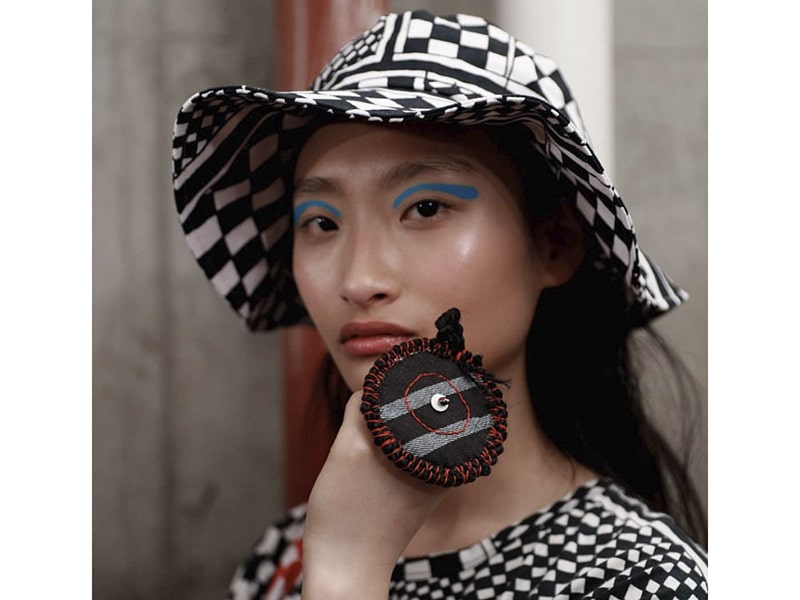
The remnant fabric jewelry came about with the release of two fashion collaborations, Lisa Waup x VERNER, with Ingrid Verner, a Melbourne-based fashion designer. It was a way for me to use all the remnant fabrics that would just be thrown in the bin. In the beginning of the project, I asked Ingrid if there would be any leftover fabric, and she collected and sent packages of it to me to create neckpieces, earrings, brooches, and rings. I love the idea that nothing gets wasted and I’m not contributing to landfill. Lisa Waup x VERNER creates limited-edition collections. It’s slow fashion that is considered; I view them as an extension of my art practice. I’ve also been fortunate to run several workshops utilizing the salvaged fabrics to share with the public so people can create their own jewelry piece from the remnants of these collections.
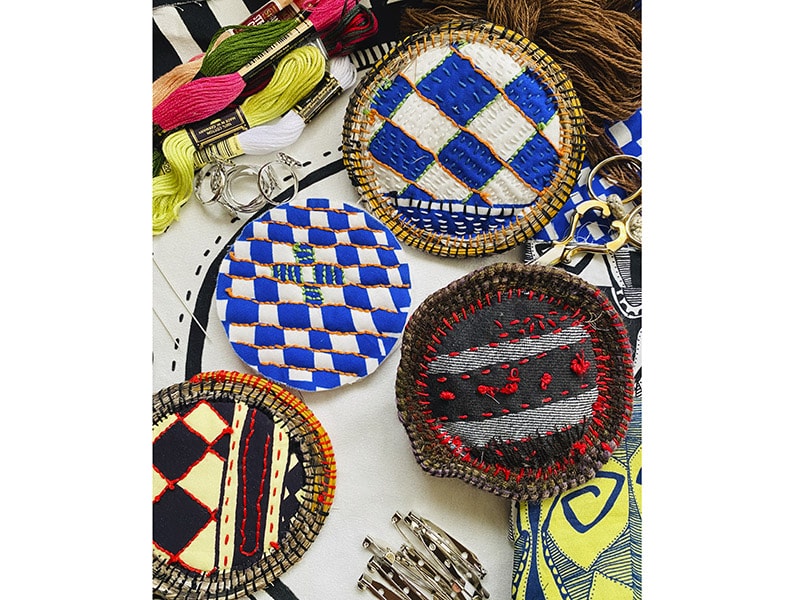
Does your curatorial work feed your own practice and thinking and, if so, in what ways?
Lisa Waup: This year I was fortunate to be co-curator of Yhonnie Scarce: Missile Park at Australian Centre for Contemporary Art (See the exhibition page for a visual example: https://acca.melbourne/exhibition/yhonnie-scarce-missile-park/) and the Institute of Modern Art alongside Max Delany (artistic director and CEO of ACCA) and Liz Nowell (executive director of the IMA). At the beginning of the year, we all embarked on a nine-day road trip to Kokatha and Nukunu artist Yhonnie Scarce’s Country in remote South Australia. She took us around her Country, which gave us all a deeper understanding of her and also the plight of her people. We came up against many prohibited signs, especially at her birthplace, Woomera. It came as a huge shock to me how locked out her people were, and still are, from their own Country. I witnessed the huge disparities between First Nations peoples and non-Indigenous people and how much control has been taken away from the Traditional Owners of that Country. Recently, I’ve been investigating the idea of creating artwork with road signs and being on Yhonnie’s Country really consolidated my drive to do so. At present, I’m experimenting with different methods of altering and reassembling found road signs to make new directional symbols. These works reflect on that restriction that was obvious while on Yhonnie’s Country, but they also become new symbols that are positive and liberating for First Nations people, leading them back to Country, family, and culture.
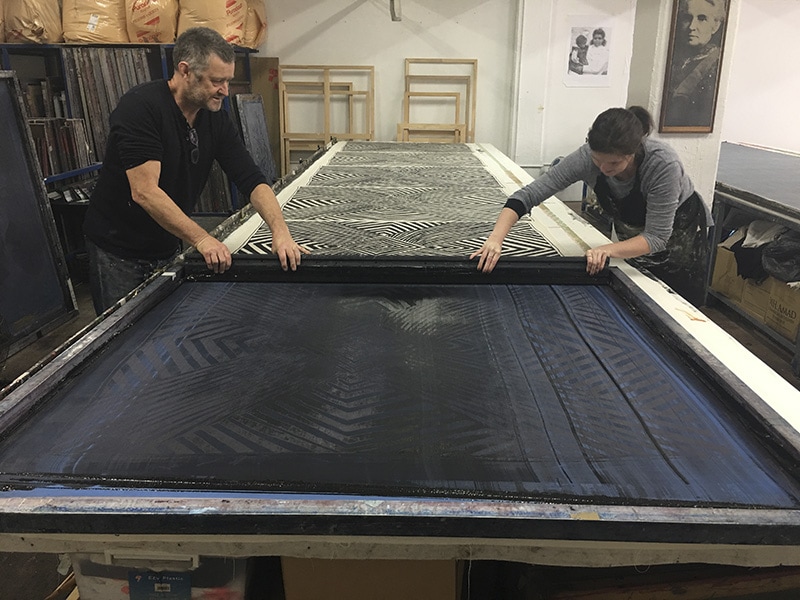
You’re currently a master’s candidate—how exciting! Briefly outline your research topic for us and how studying has gone during COVID. Does jewelry/body adornment feature in any work you’ve made or will make as you move ahead with your studies?
Lisa Waup: I’m currently in the final year of my master’s degree. My research thus far has spoken of spirit of Country, history, time, and resilience, in the mediums of photography, sculpture, printmaking, drawing, installation, and jewelry. The studies took quite a turn last year due to COVID, but this year I’m working in the workshop facilities at VCA and have been focusing on printmaking at present.
At the beginning of this year, I was fortunate to be part of a program called BLAK Designs (Jewellery) alongside 10 other incredible Aboriginal artists from Victoria. We’ve been working in the gold and silversmithing department at the Royal Melbourne Institute of Technology (RMIT), in conjunction with the Koorie Heritage Trust and the National Gallery of Victoria. The exhibition will be called BLAK Jewellery: Finding Past, Linking Future; it will be exhibited at the Koorie Heritage Trust in Melbourne in conjunction with Radiant Pavilion, and will open on September 4, 2021.
We’ve been fortunate to have been mentored by incredible jewelers—Blanche Tilden, Laura Deakin, and Lindy McSwan—and my medium of choice has been reflective road signs, which I’ve had created specially with my own text. Signs have been used throughout Australian colonial history as markers of violence, control, and racism. I was inspired to disrupt, undo, and fracture their original ambitions. I’m pulling them apart and putting them back together again in my own way, so I’ve titled them Our Way.
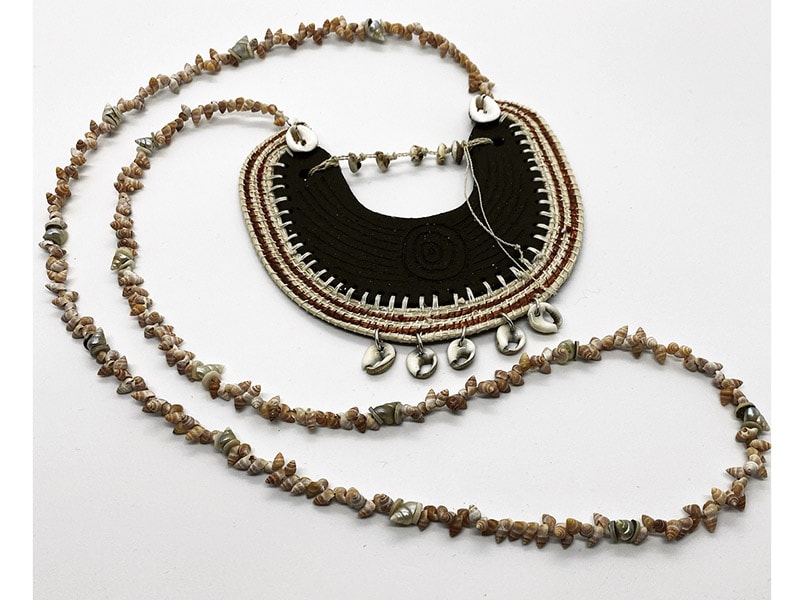
Do you wear jewelry? If so, do you wear your own works, other artists’ pieces, or a mix? Tell us about your collection, if you have one, and any specific work that really resonates with you.
Lisa Waup: I have a major weakness for acquiring jewelry as I consider it to be wearable art. I wear my own jewelry at times. I have the most incredible collection of Aboriginal, Torres Strait Islander, and Papua New Guinean wearable art. My favorite pieces in my collection are from the Yarrenyty Arltere Artists (YAA), who are based at Larapinta Valley Town Camp in Mparntwe (Alice Springs). These ladies are ingenious with their use of materials, working with recycled wool blankets that have been eco-dyed using natural and found metal objects, and lovingly embellished with thousands of colorful wool stitches. I also have a massive collection of seed necklaces; I’ve rescued the majority of them from secondhand shops. The whole premise is to pull them apart and give them another life yet at times I don’t have the heart to do so, so now I have hundreds of seed necklaces.
When you’re not at work, what do you most love to do?
Lisa Waup: I love to be with my family: three children, our dog, Beau, my parents, and chosen family. We watch movies on Netflix or old-school DVDs—we’re slowly going through our collection. Friday night was always movie night traditionally when my children were little, now it has become an unwind-at-the-end-of-the-day kind of thing. We love going to our local farmers market every Sunday, but also shopping at opportunity (thrift) stores, secondhand bazaars, and markets. Also, I’m a pretty fierce UNO player.
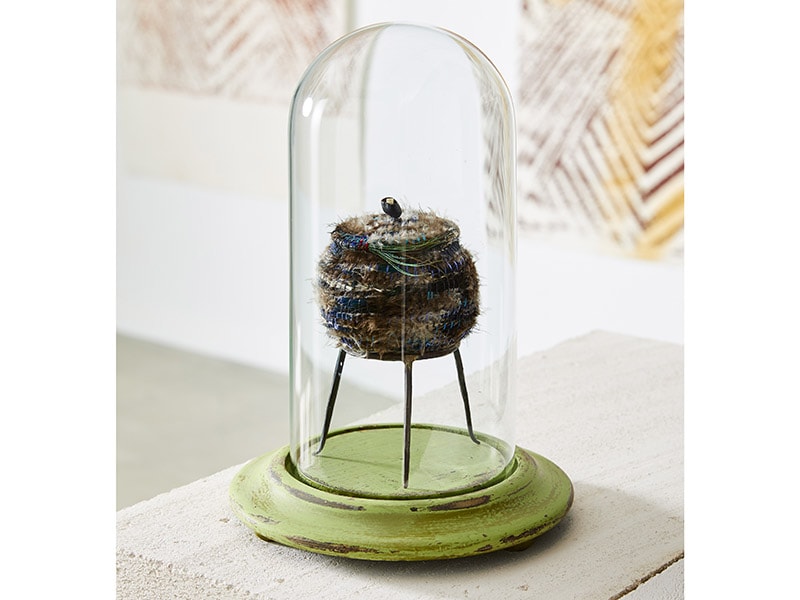
What are you reading at the moment? Do you have any recommendations?
Lisa Waup: I’m not much of a reader but I just got my hot little hands on some incredible catalogs of exhibitions that are currently in Melbourne and Victoria: Maree Clarke: Ancestral Memories, at the National Gallery of Victoria, and Blanche Tilden: Ripple Effect—A 25-Year Survey, at Geelong Gallery. We’ve been in our sixth lockdown in Melbourne, and I have yet to see Blanche’s exhibition. I guess the catalog is the next best thing, but I’m still hopeful that I’ll be able to go see the show after lockdowns loosen. I was fortunate to have seen Mutti Mutti, Yorta Yorta, BoonWurrung/Wemba Wemba artist Maree Clarke’s exhibition. She’s a multidisciplinary artist whom I admire and respect greatly. The incredible catalog details her practice over the last three decades and poring over it is a great way to help ease lockdown and relive visiting Ancestral Memories over and over again.
[1] Country is capitalized as the term is an expansive, personal, and complex notion and reality for First Nations people in Australia. Country doesn’t just mean physical country or landscape—instead it involves a deep cultural and spiritual connection between individuals, communities, the land (including sky and water), and all living things. It is a relationship that continues across time and is evident in storytelling and culture. In this way, Country is its own entity that requires respect and care and strongly contributes to the formation of identity for First Nations people in Australia.

